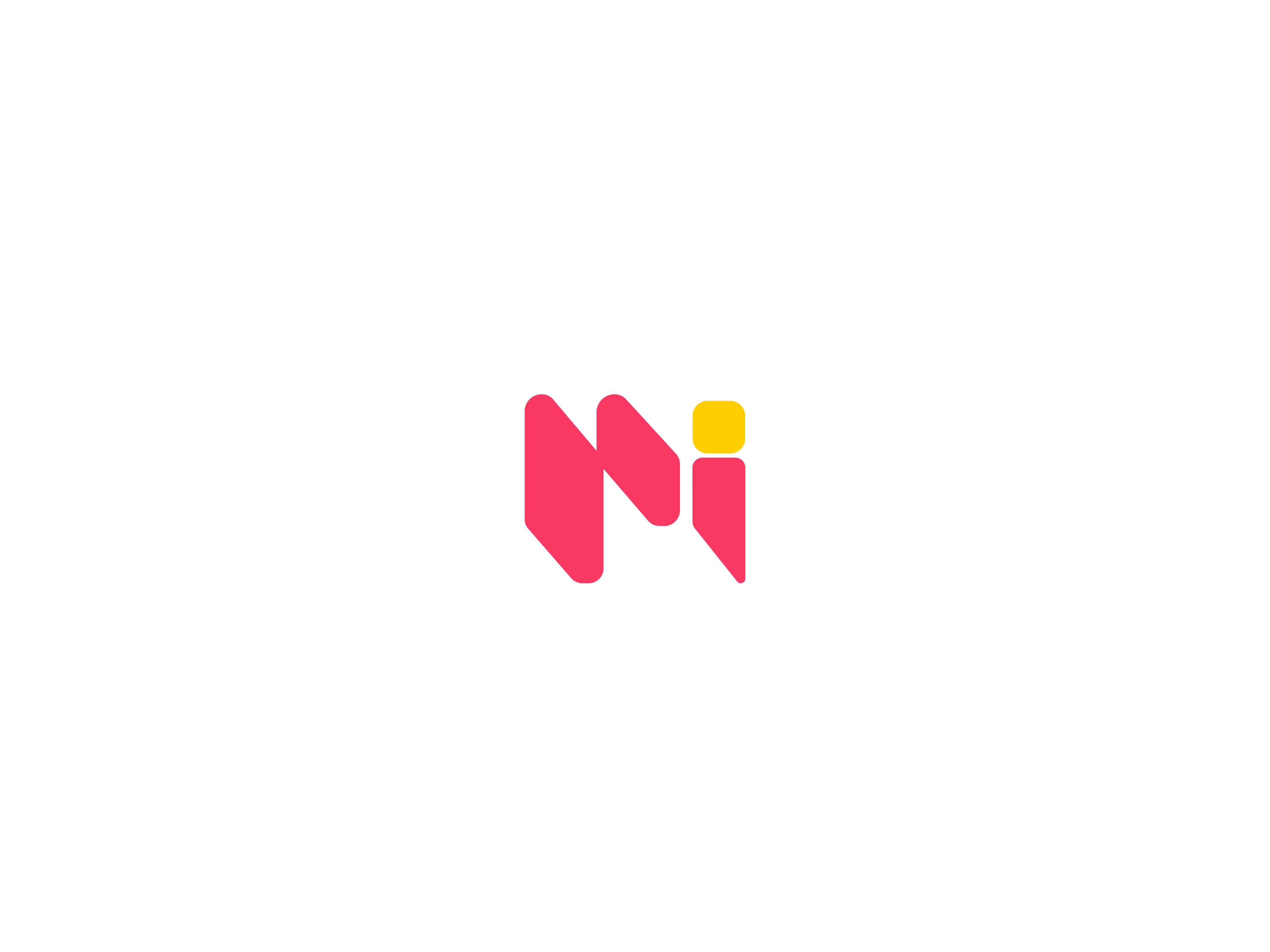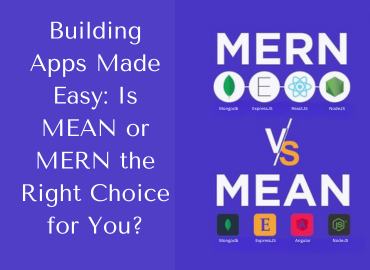


INTRODUCTION
Ever dreamt of crafting epic web apps that blow users away with their speed, interactivity, and sleek design? That's where the MEAN and MERN stacks come in, like your ultimate JavaScript battle axes!
Think of these stacks as fully-equipped developer toolkits. Each one holds unique weapons and strategies to help you conquer the world of web development. But before you choose your champion, it's crucial to understand their strengths and styles.
Why should you care about MEAN and MERN?
Get Ready, as these technologies are transforming the development of online applications. The brief is as follows:
JavaScript: Remember how JavaScript used to just chill on the front-end ? Well, with MEAN and MERN, it can dominate both the front-end and the back-end (the hidden engine powering the app). This translates to smoother development and lightning-fast app performance.
Dynamic & Interactive Apps: Gone are the days of static, boring websites. MEAN and MERN let you build engaging and dynamic apps with real-time updates, smooth animations, and features that keep users stick to their screens. Imagine building apps like the next big social media platform or a real-time stock market tracker – that's the power we're talking about!
Industry Approved: Big tech giants like Netflix, Uber, and even Google use these stacks. Gaining proficiency with them could lead to amazing career opportunities in the rapidly growing web development industry.
Are you ready to discover the potential of these JavaScript stacks? This blog will be your go-to source for information on what it's like to create apps using MEAN and MERN. We'll break down each stack, look at its components, and give you the details you need to choose the one that most closely fits your development strategy and project specifications.
Alright warriors, we just stepped into the JavaScript arena, ready to assess the powerhouses known as MEAN and MERN stacks.Each of the two powerful armies has its own special weaponry and tactics. Today, we'll analyze the first contender: the MEAN stack. Imagine it as your JavaScript superhero team, each member holding a distinct power that together, forms a powerful force.
1. MongoDB: The Flexible Data Master
Meet MongoDB, the superhero with the ever-evolving utility belt. Unlike traditional databases with their rigid structures, MongoDB is a NoSQL database, offering unmatched flexibility and scalability. Think of it as the team's versatile data manager, capable of adapting to any type of information – user profiles, complex game data, or even real-time updates. Just like your app's functionality can evolve, so can your data storage with MongoDB.
2. Express.js: The Swift & Streamlined Architect
Next up is Express.js, the agile and efficient architect of the team. This lightweight web framework helps you build APIs (Application Programming Interfaces), which act as the communication channels between your app's front-end and back-end. Think of it as the mission control, ensuring smooth information flow and rapid responses, just like your superhero team's coordinated operations require swift communication.
3. Angular: The Structured & Powerful Leader
Now, let's meet Angular, the powerful strategist and leader of the MEAN team. This mature JavaScript framework excels at building single-page applications (SPAs), essentially web apps that feel like native desktop applications. Angular provides a structured and organized approach to building complex front-end interfaces, ensuring your app is not only powerful but also maintainable and scalable, just like a cohesive superhero team requires strong leadership and a well-defined structure.
4. Node.js: The JavaScript Unifier
Finally, we have Node.js, the unifying force behind the MEAN stack. Traditionally, JavaScript was confined to the browser. But Node.js acts as a runtime environment, allowing you to execute JavaScript code outside the browser, on the server-side. This means you can use the same language (JavaScript) for both front-end and back-end development, making the entire process seamless and efficient, much like your superheroes wouldn't have to learn separate languages to communicate with their tech support team.
These four strong elements work together to create the MEAN stack, which makes it simple to create dynamic and interactive online applications.
Understanding the importance of MERN Stack
While the MEAN stack brings a structured and organized approach to web development, the MERN stack shines with its focus on flexibility and rapid development. Here's why devs love it:
React.js: The Game Changer: Unlike Angular, React is a nimble JavaScript library, not a full-fledged framework. This gives you incredible freedom to customize your app's structure and choose the best tools for the job.
Faster Development Time: With React's streamlined workflow and focus on reusable components, you can prototype and build features more quickly. This makes MERN great for fast-paced projects or when you want to see your ideas come to life quickly.
Rising Star with a Vibrant Community: While MERN may be younger than MEAN, it has gained immense popularity. This means abundant learning resources, helpful forums, and the support you need to build awesome apps.
Alright warriors, we've assembled the MEAN stack team and explored their unique superpowers. Now, let's dive into the actual arena of building an app.
1. Architecting for Victory: MongoDB & Express.js
Consider developing your app like the headquarters of a superhero. To start, you'll need a vault that is both flexible and safe to save all of your data, including mission logs, game progress, and user information. This is where our adaptable NoSQL database, MongoDB, comes into play. It makes it simple to establish the data structure and scale it up with ease as your application expands.
Next, you need a control center to manage communication between different parts of the headquarters, just like mission control coordinates hero activities. That's the role of Express.js, our lightweight web framework. We'll use it to build APIs (Application Programming Interfaces), which act as the communication channels between the user interface (front-end) and the data storage (back-end).
2. Building the User Interface: Angular Takes the Stage
Let's now proceed to developing the user interface, which serves as your app's command center and interface for users to interact with. This is where our strong, well-organized framework, Angular, succeeds. We'll use Angular components to build reusable user interface components such as data displays, forms, and buttons. Angular services, which serve as common functionality modules and encourage code reuse and maintainability, can improve these components even further. Similar to how multiple divisions cooperate to create a superhero headquarters, Angular services and components work together to provide an interface that is both efficient and easy to use.
3. Connecting the Forces: APIs & Data Fetching
Remember the APIs we built with Express.js? These act as the communication bridges between the user interface and the data stored in MongoDB. Using data fetching techniques, Angular will send requests to these APIs, retrieve the necessary information, and update the user interface accordingly. This back-and-forth communication ensures your app displays the relevant data and responds to user interactions in real-time.
By following these steps, you'll be well on your way to building dynamic and interactive web applications with the MEAN stack. Remember , this is only a brief overview of the development process. We'll go into more detail about each stage and offer resources to help you learn more in later blogs.
IV. Comparing and Differentiating MEAN vs. MERN
Alright warriors, we've explored both the MEAN and MERN stacks, understanding their individual strengths and components. Now, it's time to enter the training arena and compare these JavaScript powerhouses head to head.
Choosing Your Champion:
So, which stack should you choose? It depends on your project requirements and development preferences:
For complex projects requiring a structured approach and strong organization, MEAN might be a better fit.
If you prioritize flexibility and rapid development for smaller projects or prototypes, MERN could be more suitable.
Consider your existing skillset and the learning curve of each framework.
Explore existing projects built with each stack to see which aligns better with your vision.
In the end, the ideal stack is the one that challenges you to advance as a developer while simultaneously enabling you to create the app of your dreams. Try both and see which one is more convenient and effective for you.
Now, warriors, this concludes our battle of the JavaScript stack. We have looked at the MERN stack, which has the possibility for quick development and flexibility, and the MEAN stack, which has a well defined structure. You now have a solid understanding of their unique advantages and how they might enable you to create stunning online applications.
Key points to be learned:
Both MEAN and MERN offer powerful tools for building dynamic and interactive web apps using JavaScript.
Choose the right stack: Consider your project's complexity, development speed requirements, your existing skillset, and learning curve preferences.
Understanding both stacks: Even if you choose one, having a basic understanding of both broadens your knowledge and opens doors to future projects requiring different approaches.
Remember, the true power lies not solely in the stack you choose, but in your dedication to learning and continuous improvement. So, warriors, go forth, explore, and build something amazing!